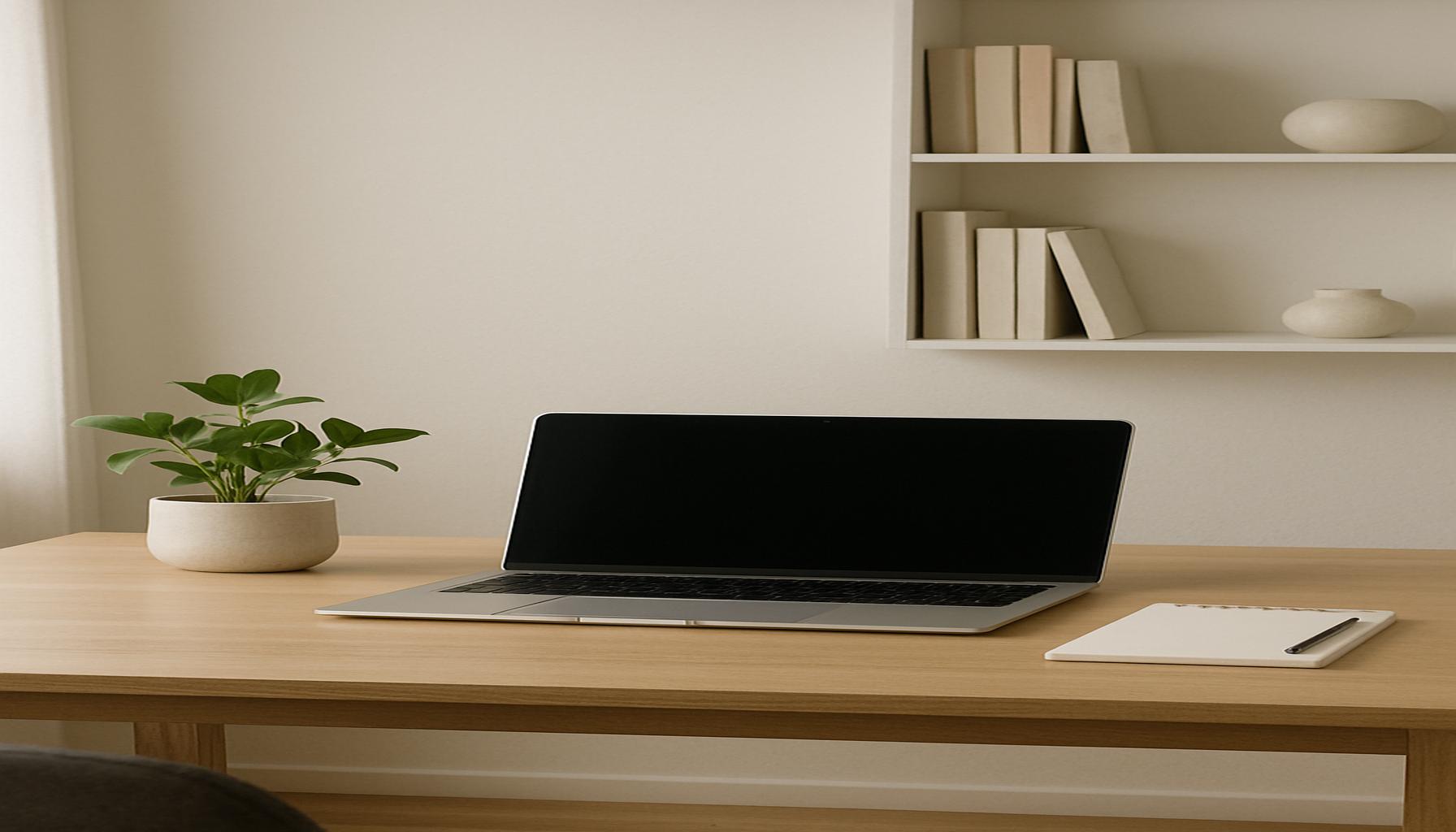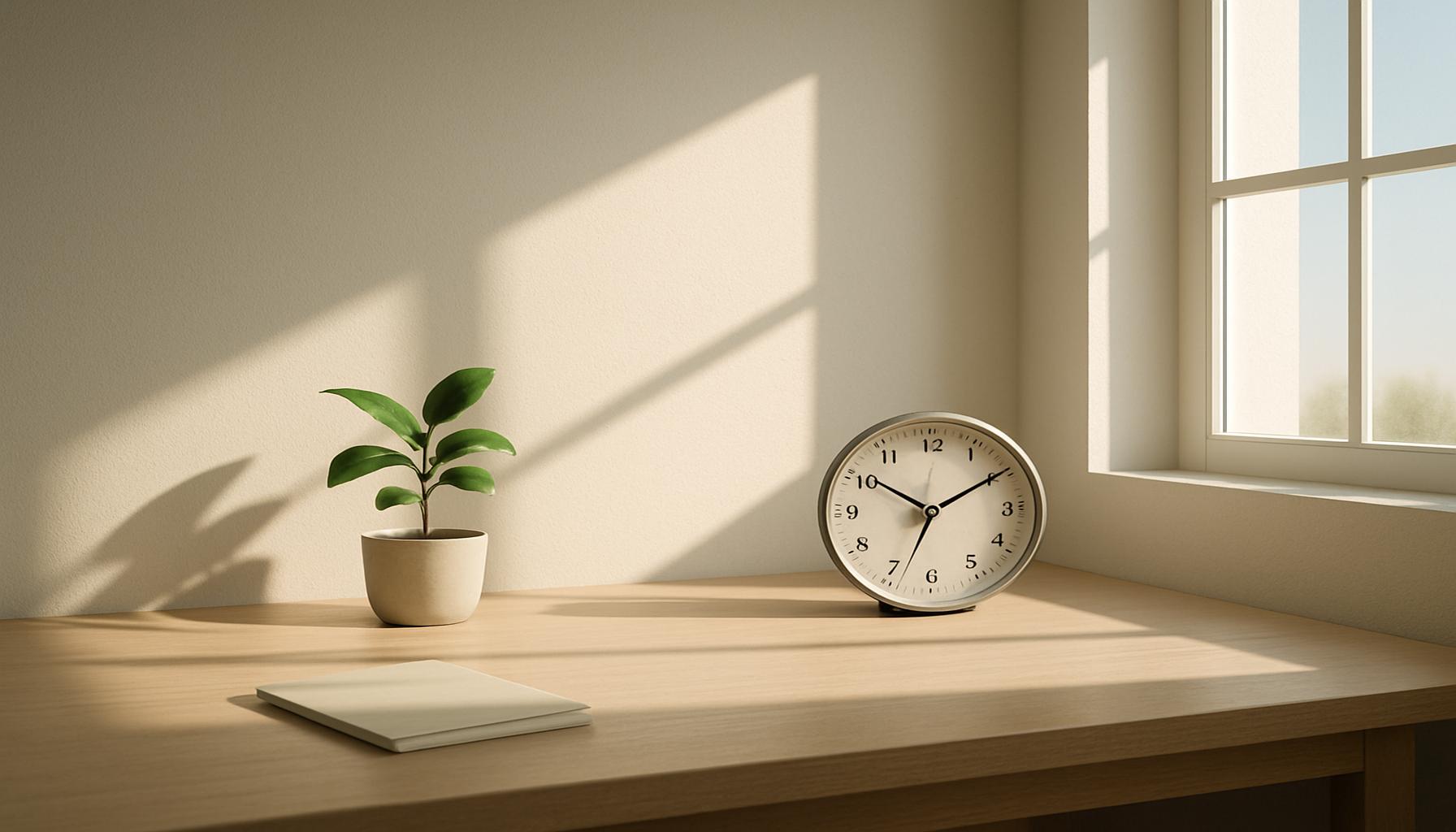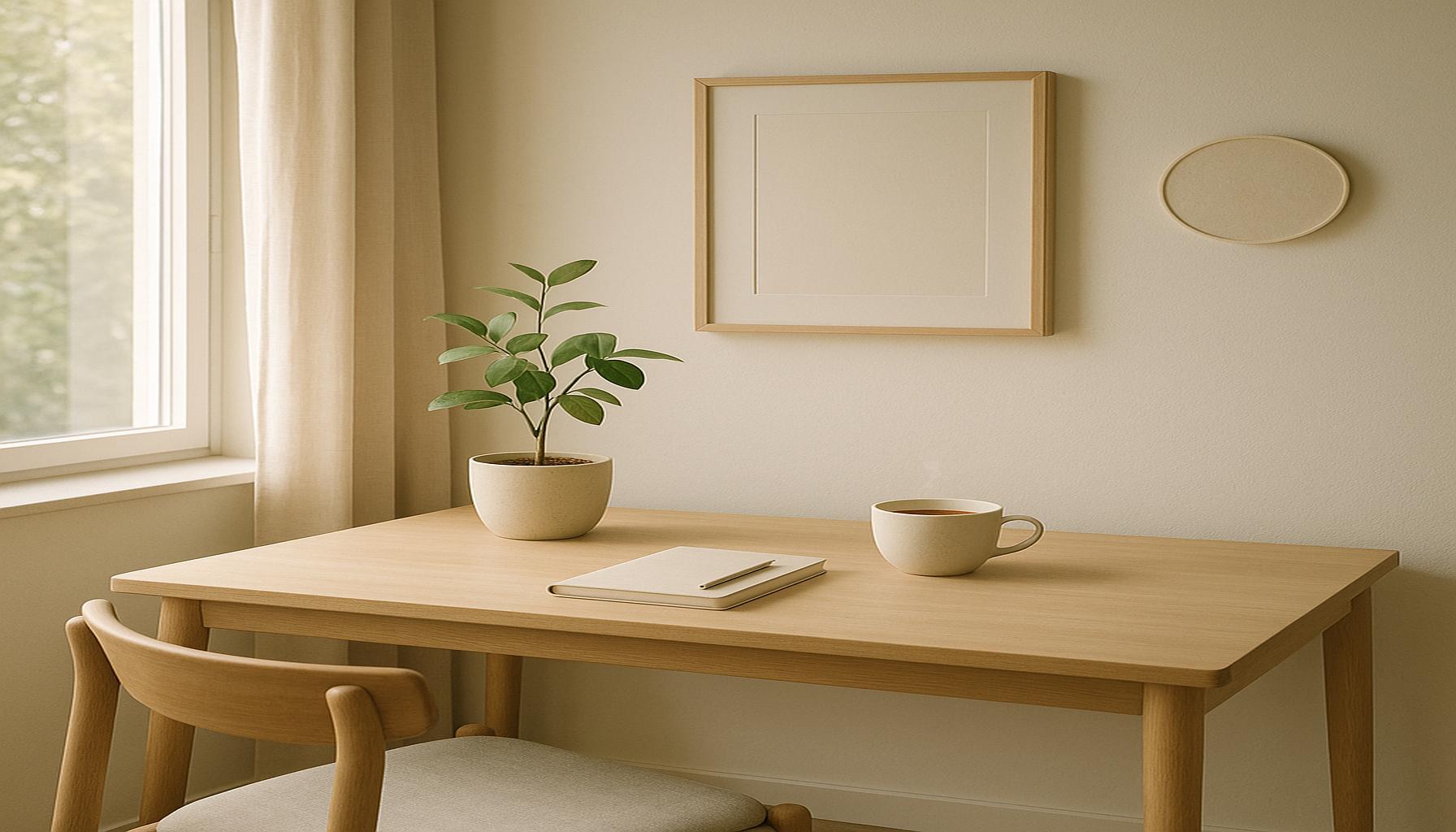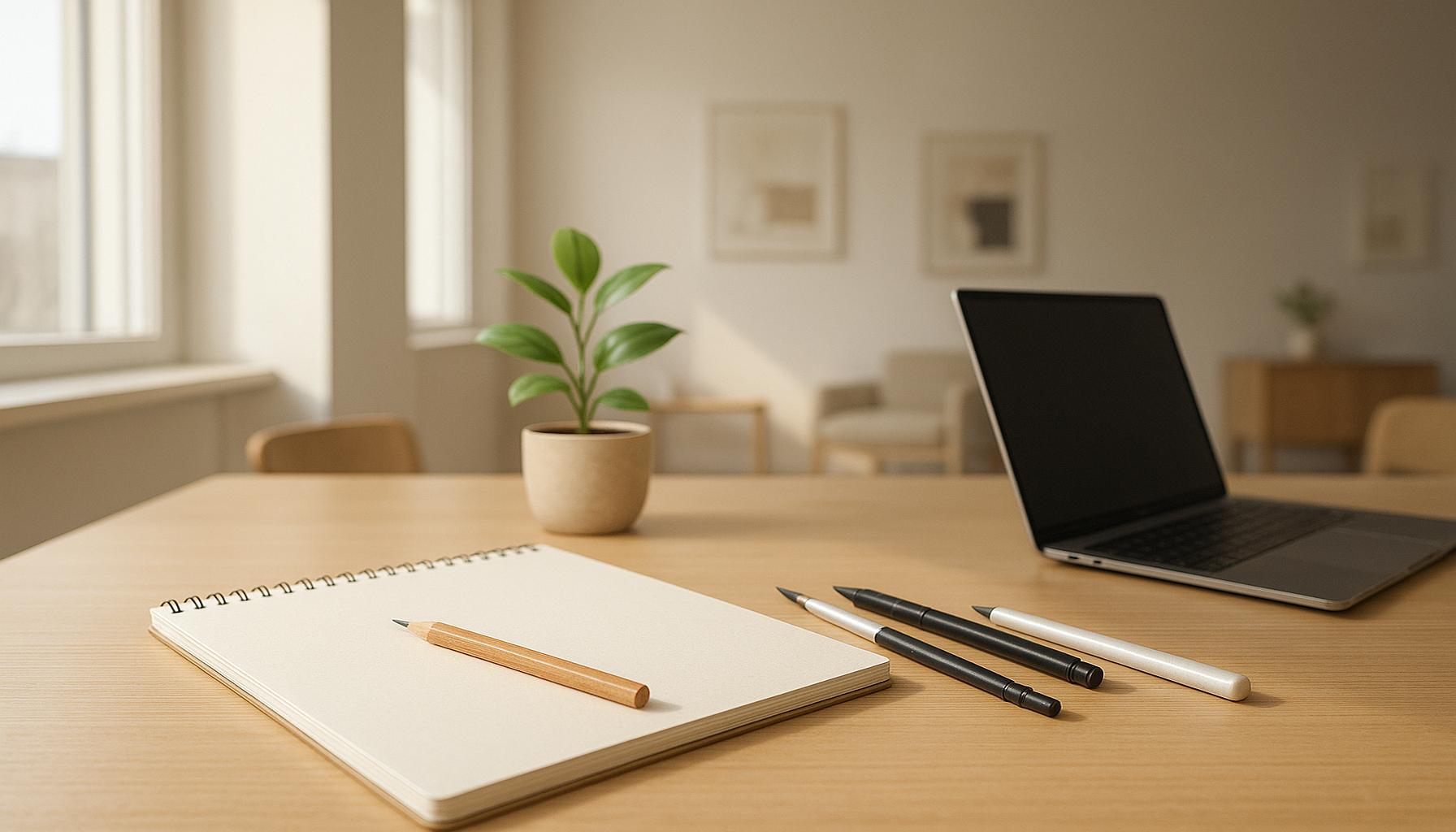Minimalist Personal Organization: How to Optimize Your Space and Time

Understanding Minimalist Personal Organization
In our modern society, where distractions abound and the demands on our time are ever-increasing, achieving a sense of calm might seem elusive. Minimalist personal organization emerges as a beacon, offering a roadmap to creating both a tranquil living space and an efficiently managed schedule. This approach not only enhances aesthetic appeal but significantly contributes to mental well-being and overall quality of life.
Consider an average American household, often filled to the brim with items collected over the years—from clothes that no longer fit to gadgets that rarely see the light of day. Each item that clutters our homes represents a potential source of distraction. To combat this, decluttering serves as the foundational first step in minimalist personal organization. A fruitful practice is to engage in the “one-year rule”; if you have not used an item in the past year, it may be time to let it go. For example, if your closet bulges with unused clothing, it might be beneficial to donate these items to local charities or recycle them. This act not only frees up physical space but also cultivates a mindset of intentionality.
Next in the minimalist playbook is intentional space usage. This principle encourages individuals to create areas within their homes that spark joy and inspiration. For instance, a designated workspace that is free from distractions can enhance focus and creativity. Consider transforming a corner of your living room into a reading nook with a comfortable chair, good lighting, and your favorite books. Such spaces become sanctuaries that nurture productivity and well-being.
Prioritizing Tasks
In addition to optimizing physical environments, minimalist organization also emphasizes prioritized tasks. In a world where “busy” is often mistaken for “productive,” identifying key activities that align with your goals can drastically improve outcomes. For example, utilizing a priority matrix to classify tasks based on urgency and importance can help ensure that your time is spent on actions that yield the highest returns. By concentrating on what truly matters—whether that’s advancing a career or nurturing relationships—you reclaim valuable time and mental resources.
Many studies have shown that a cleaner, more organized environment can significantly reduce stress levels. In fact, environments that are clutter-free have been linked to improved mental clarity, allowing individuals to think creatively and solve problems more effectively. As you navigate the journey into minimalist personal organization, it is important to remember that these principles can be tailored to fit personal preferences and lifestyles.
While embracing minimalism may initially seem challenging, the potential rewards are immense. The ultimate goal is to foster a lifestyle that prioritizes simplicity and clarity, enabling meaningful experiences to take center stage. From utilizing minimalist strategies in everyday life to rethinking your spatial arrangements, the journey toward a more organized existence is both rewarding and liberating. Join us as we explore practical tips and enriching ideas to help you maximize your space and time for a more intentional life.
DISCOVER MORE: Click here to learn about the emotional benefits of decluttering
Decluttering: The First Step to Minimalist Personal Organization
Decluttering forms the bedrock of minimalist personal organization, transforming chaotic spaces into havens of tranquility. The process begins with evaluating what is truly essential in your life. This evaluation requires an honest look at your belongings—ask yourself whether each item serves a purpose or brings you joy. This concept draws from the popular Japanese organizing consultant Marie Kondo’s philosophy, which asserts that belongings should either ‘spark joy’ or be discarded.
Implementing a decluttering strategy can be simple yet effective. Consider these actionable steps:
- Start Small: Choose one room or even one drawer to tackle first. The pressure of decluttering an entire home can feel overwhelming. By focusing on small areas, you cultivate momentum.
- Set a Timed Challenge: Allocate a specific amount of time, such as 30 minutes, to declutter. This creates a sense of urgency, making the task less daunting.
- Sort into Categories: Create designated piles for items you wish to keep, discard, or donate. This visual categorization simplifies decision-making.
- Practice the One-in-One-out Rule: To maintain a clutter-free environment after your initial declutter, commit to removing one item for every new item you introduce into your space.
Statistics reveal that Americans spend around 55 minutes each day searching for items they can’t find. This translates to roughly 12 days a year lost to searching! By decluttering effectively, you can significantly reduce those lost hours while enhancing your overall productivity.
Creating an Intentional Space
Once the clutter is under control, the next critical phase is creating an intentional space. This principle revolves around designing your environment to reflect your priorities and values. It’s essential to curate a living space that aligns with your goals. Workspace organization, for example, can pivotal in enhancing productivity. A vast majority of remote workers have found that an organized desk can significantly improve focus and efficiency.
Here are some tips for optimizing space effectively:
- Use Multifunctional Furniture: Invest in pieces that serve dual purposes, such as a coffee table with storage capability or a sofa bed. These smart choices maximize your living area without compromising style.
- Zone Your Space: Organize your home into zones based on activities, such as a dedicated reading area or a quiet corner for meditation. Clearly defined areas foster an environment conducive for each activity.
- Limit Decorative Items: Opt to display only a few carefully chosen decorative pieces instead of crowding shelves with various objects. This not only simplifies your space visually but also provides focus.
By creating intentional spaces tailored to your personal or work-related needs, you can enhance mental clarity and boost your overall well-being. Adopting these minimalist strategies brings a sense of order and calm to your life, freeing you to concentrate on what truly matters.
| Advantages | Details |
|---|---|
| Enhanced Focus | By minimizing distractions, one can significantly increase productivity and be more effective in completing tasks. |
| Time Efficiency | With fewer items and an organized environment, one can save time in finding tools and resources, allowing for quick decision-making and action. |
Embracing a minimalist approach to personal organization not only aids in enhancing focus but also promotes time efficiency in everyday tasks. By stripping away the clutter, you create a more serene environment that fosters creativity and innovation.One of the most remarkable aspects of minimalism is its capability to alter perceptions and behaviors towards possessions and time management. Individuals tend to experience reduced stress levels as they learn to prioritize what truly matters. This leads to the building of habits around intentional living, ensuring that each item and action holds a specific purpose and value.The concept of space optimization becomes paramount here; with fewer items, each space can be purposefully arranged to support the most critical tasks at hand. This efficiency translates into overall improvements in life quality, making it an appealing subject for those looking to streamline their routines. By opting for a minimalist personal organization strategy, you gear yourself toward a more fulfilling, organized, and impactful lifestyle.
DISCOVER MORE: Click here to dive deeper
Streamlining Your Daily Routines
With a decluttered space in place, the journey towards minimalist personal organization advances into the realm of streamlining your daily routines. This step is crucial in optimizing both your time and productivity. By refining your routines, you create an environment where your time can be spent more effectively, allowing you to focus on high-priority tasks without unnecessary distractions.
Start by evaluating your daily activities and identifying areas where you can eliminate waste or inefficiency. Here are several powerful strategies to simplify your routines:
- Establish a Morning Routine: A consistent morning routine sets a positive tone for the day. Begin with small, repeatable tasks, such as making your bed, followed by a short meditation or physical exercise. Research shows that mornings set the foundation for productivity; nearly 70% of successful individuals have structured morning routines.
- Batch Similar Tasks: Grouping similar tasks together minimizes the mental load associated with switching between different types of work. For example, designate specific time slots for emails, phone calls, and project work. This method not only enhances focus but also results in meaningful time savings.
- Utilize Technology Wisely: Leverage apps designed to boost productivity—consider task management tools like Trello or Todoist. These digital organizers help you keep track of your responsibilities while reducing cognitive overload. According to studies, technology can enhance productivity by up to 30% when utilized efficiently.
Implementing Time Blocking Techniques
Another significant strategy within minimalist personal organization is time blocking. This method involves allocating specific blocks of time for particular tasks or activities throughout your day. By assigning time to your priorities, you can prevent tasks from spilling into one another, which can lead to increased stress and decreased productivity.
To effectively implement time blocking:
- Assess Your Commitments: Begin by cataloging all your commitments, including work, family time, and personal projects. This comprehensive overview allows you to identify where your time is currently allocated.
- Create a Visual Schedule: Use a physical planner or a digital calendar to visually map out your time blocks. Color-coding different activities can provide an instant visual cue about how your day is structured.
- Be Flexible: Minimalism is about finding what works for you. If certain time blocks aren’t yielding results, adjust them. Flexibility will help you refine your approach without imposing unnecessary rigidity on your day.
Incorporating time blocking into your daily routine is known to improve time management significantly. A recent survey found that over 60% of professionals who adopted this technique reported feeling less overwhelmed and more productive in their work.
The Role of Mindfulness in Organization
Lastly, integrating mindfulness into your daily activities can enhance the minimalist personal organization approach. Mindfulness helps you remain present and engaged in your tasks, minimizing stress and promoting a sense of peace. Practicing mindfulness during mundane routines, such as washing dishes or commuting, can transform these moments into opportunities for reflection and clarity.
Engaging in mindfulness may include:
- Mindful Breathing: Take a moment throughout your day to focus solely on your breath, allowing it to ground you and prevent feelings of overwhelm.
- Mindful Eating: Practice being fully present during meals, appreciating both the food and the experience. This encourages slow eating, which can prevent overeating and improve digestion.
- Gratitude Journaling: Allocate a few moments each night to jot down things for which you are grateful. This can enhance your overall perspective, creating a more positive mindset as you drift off to sleep.
By embracing mindfulness as part of your organization strategy, you cultivate an enriched, meaningful existence, ultimately enhancing both your productivity and well-being.
DISCOVER MORE: Click here to enhance your digital efficiency
Conclusion: Embracing Minimalist Personal Organization
In a rapidly evolving world filled with distractions, the pursuit of minimalist personal organization becomes essential for achieving a balanced and fulfilling life. By streamlining your environment and routines, time management can be dramatically improved, allowing for meaningful engagement with both work and personal endeavors.
As explored in this article, the journey begins with creating a clutter-free space, which lays the groundwork for enhanced focus and productivity. Implementing a structured morning routine ignites a positive mindset that can set the tone for the day. Additionally, techniques such as batching similar tasks and adopting time blocking serve as invaluable tools to navigate through daily commitments more efficiently. Utilizing modern technology wisely further enhances your ability to stay organized, reducing cognitive overload and freeing up mental space.
Furthermore, integrating mindfulness into your daily practices transforms everyday moments into opportunities for reflection and clarity. Being mindful not only improves mental well-being but also deepens your overall experience, leading to increased satisfaction with your choices and routines. The research indicating that over 60% of professionals feel a surge in productivity after adopting these methods underscores the effectiveness of a minimalist approach.
Ultimately, the principles of minimalism guide you in reclaiming your space and time, fostering a life rich with purpose, productivity, and peace. As you adopt these strategies and tailor them to your unique needs, you may discover new pathways to success and fulfillment, paving the way toward a more organized and intentional lifestyle.


